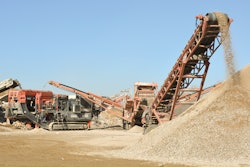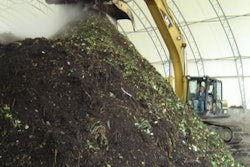It may be tough to picture yourself as anything comparable to an “environmentalist” when it comes to managing your construction company or equipment fleet. By the nature of the business, you deal with projects that tear up the earth, consume natural resources and/or involve large numbers of exhaust-emitting heavy equipment. Yet, the construction industry is evolving and its processes and tools along with it.
While the industry has long been accused of being a primary polluter, it initiated steps to preserve and protect our resources long before “reducing your carbon footprint” came into vogue. Take the road building sector. The preservation, restoration and reclamation of existing pavement has been a long-standing practice. Though intended to stretch tight transportation dollars, a positive side benefit is it takes advantage of existing resources, reduces the number of machines required to complete a project, limits the required vehicle miles traveled and cuts the level of debris going into landfills, all of which are environmentally sound initiatives.
Road builders are also utilizing mix designs that can cut costs on jobs plus have an environmental impact. The use of rubberized asphalt is one example. Intended to take advantage of the petroleum content of used tires and deliver a smoother, quieter surface, it also repurposes what has historically been a difficult to manage waste product.
The demolition sector follows a similar principle with the deconstruction principle. Rather than randomly pull down structures and send piles of C&D debris to landfills, deconstruction is a carefully orchestrated process that strives to generate the highest percentage of reusable materials possible from a demolition project. This material can be reused in new construction (e.g., crushed concrete) or resold as an added profit center (e.g., reclaimed rebar). Taken as a whole, the process delivers the same results for the customer while benefiting both the contractor and the environment.
Though still in its infancy, the earthmoving sector is heading in a similar direction. Implementation of grade control systems is allowing contractors to significantly reduce the time and cost to complete dirt work by virtually eliminating grade staking and rework, and enabling equipment operators to achieve fine grade more quickly. As a result, equipment is on the job for less time, cutting fuel consumption, operating costs and exhaust emissions.
The use of telematics combines financial and environmental benefits, as well. Depending on the system, it can allow you to more effectively manage fleet logistics, track equipment performance, control maintenance intervals, monitor operator performance, etc. The data provided helps you reduce under-utilized equipment on site, cut unnecessary idling, maintain equipment for peak operation and fuel efficiency, minimize vehicle miles traveled, etc.
Clearly, the construction industry is an unsung hero when it comes to the environmental movement, whether it happened by intention or not. And there are many opportunities to take this to the next level. Such opportunities will be discussed throughout the year in Equipment Today. In the meantime, you can find a wealth of information on “green building” and its benefits in our sister publication, Sustainable Construction (ForConstructionPros.com/magazine/susc). Published on a quarterly basis as a digital edition, it focuses on how to implement sustainable construction practices in your business and the potential return on investment they can offer. For the benefit of both your company and the environment, I hope you’ll check it out.



















